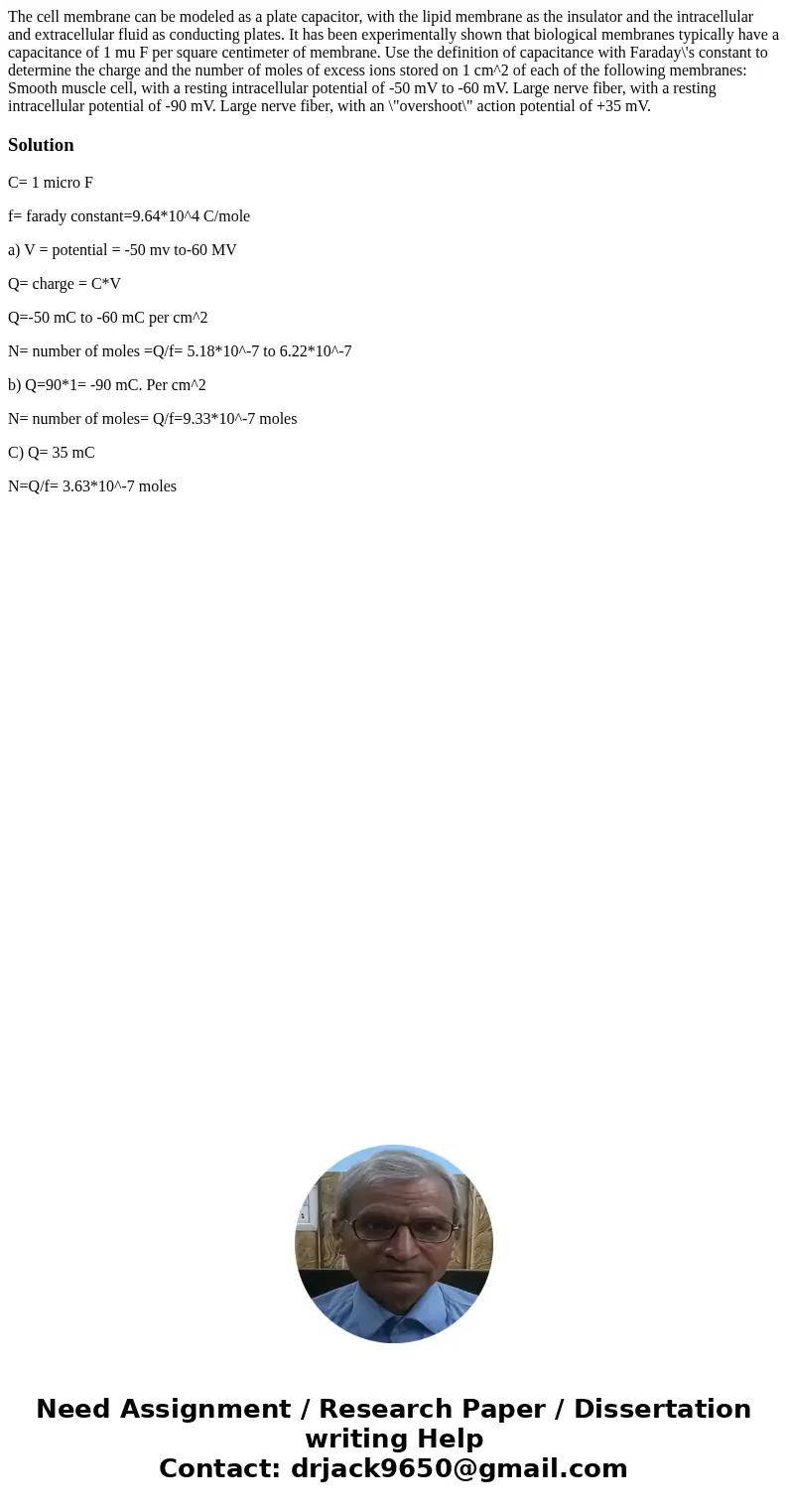The cell membrane can be modeled as a plate capacitor with t
The cell membrane can be modeled as a plate capacitor, with the lipid membrane as the insulator and the intracellular and extracellular fluid as conducting plates. It has been experimentally shown that biological membranes typically have a capacitance of 1 mu F per square centimeter of membrane. Use the definition of capacitance with Faraday\'s constant to determine the charge and the number of moles of excess ions stored on 1 cm^2 of each of the following membranes: Smooth muscle cell, with a resting intracellular potential of -50 mV to -60 mV. Large nerve fiber, with a resting intracellular potential of -90 mV. Large nerve fiber, with an \"overshoot\" action potential of +35 mV.
Solution
C= 1 micro F
f= farady constant=9.64*10^4 C/mole
a) V = potential = -50 mv to-60 MV
Q= charge = C*V
Q=-50 mC to -60 mC per cm^2
N= number of moles =Q/f= 5.18*10^-7 to 6.22*10^-7
b) Q=90*1= -90 mC. Per cm^2
N= number of moles= Q/f=9.33*10^-7 moles
C) Q= 35 mC
N=Q/f= 3.63*10^-7 moles

 Homework Sourse
Homework Sourse